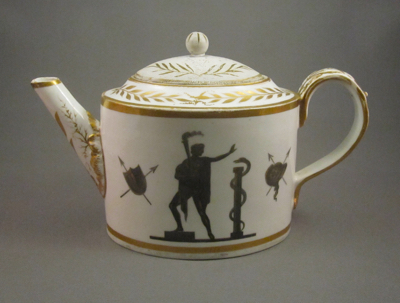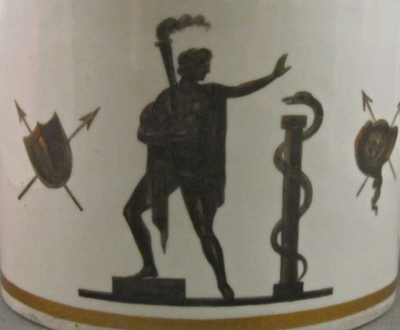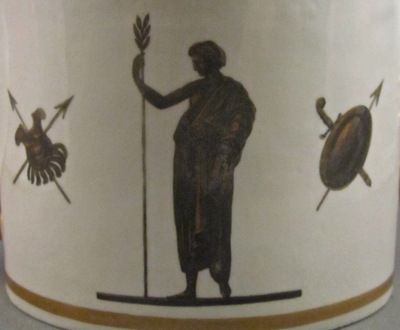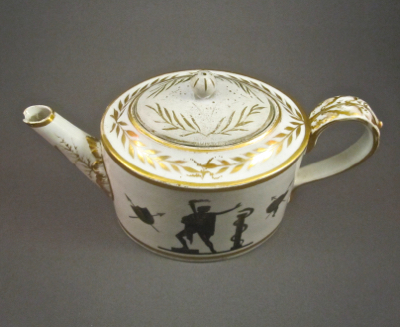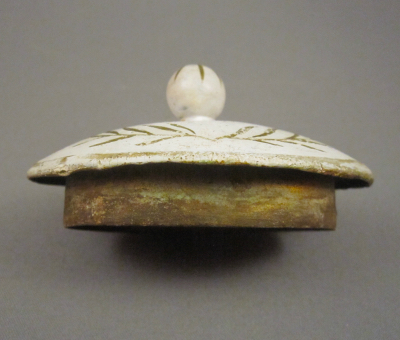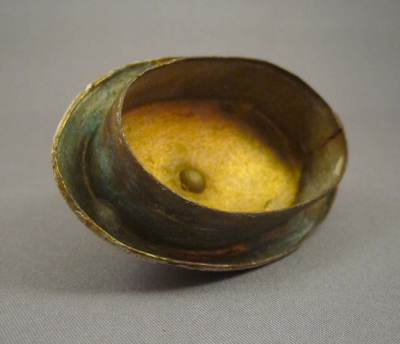Posts Tagged ‘English’
Saturday, August 1st, 2015
It’s obvious why there are so many early children’s ceramics with inventive repairs. Before the invention of bakelite and plastic, children used smaller versions of adult sized ceramics, and their little hands could barely hold these fragile vessels, especially when filled with hot liquids. So could you really blame these poor innocents when many a mug, plate and glass slipped away, ending up shattered on the floor?
This child’s mug is clearly titled with the 16th century English proverb “MAKE HAY WHILE THE SUN SHINES” and has brown transfer decoration of a farming scene with a pink lustre ring along the rim. It was made in the Staffordshire region of England in the first quarter of the 19th century and measures 2.25 inches high. After the handle broke off, it was taken to a tinker who fashioned an ear shaped metal replacement handle and support bands. A triangular piece from another cup was patched in along the top to replace a lost chip. In my humble opinion, the repairs add character to this wounded survivor, making it much more interesting than a “perfect” one.




This mug with identical form and decoration shows what the original handle on mine would have looked like before it took a tumble.
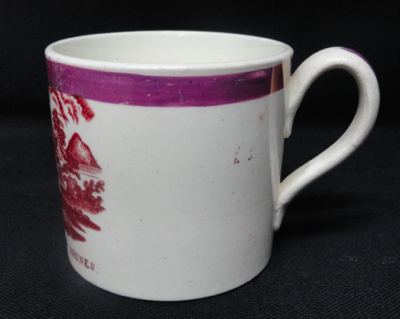
Photo courtesy of Ruby Lane
Tags:English, lustre, metal handle, pottery
Posted in mug/tankard | 4 Comments »
Sunday, June 14th, 2015
I purchased this unmarked soft-paste teabowl from an antique ceramics dealer in the UK who appreciates early repairs and has provided me with many interesting examples of make-do repairs over the years. This piece was made by Philip Christian Liverpool Porcelain, c.1765-70, and measures 1-3/4 inches high x 3 inches diameter. It has a fluted body with molded leaves and flowers, a cobalt blue underglaze border of leaves and berries, and a flower motif painted on the inside.
This delicate teabowl boasts multiple repairs done by a 19th century “china mender.” After the bowl broke, a large chip was reattached using tightly bound brass wire wrapped around holes drilled through the body, appearing at first like more commonly used staple repairs. A large blob of lead was applied to the center of the crack, acting as an anchoring rivet. A smaller chip along the rim, perhaps lost or too small to repair, has been replaced with a thin sliver of porcelain decorated with iron-red scrollwork from another piece entirely. This type of repair, using thin wire instead of metal staples, is typically associated with 19th century repair work done in Belgium and the South of France.
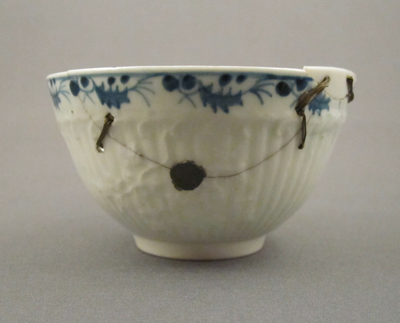
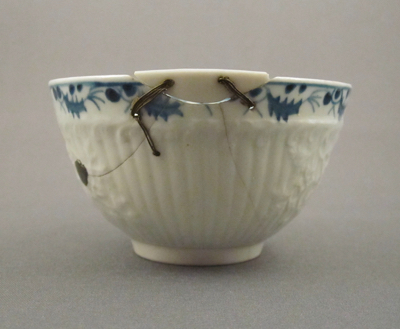
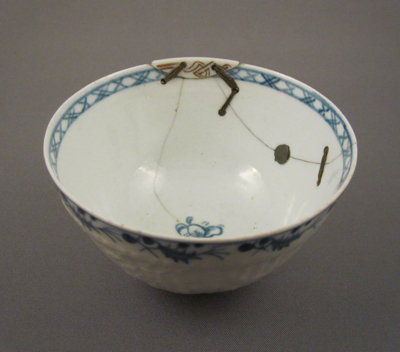
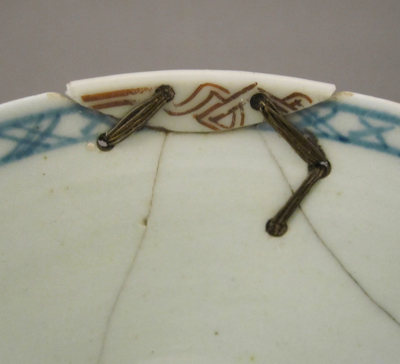
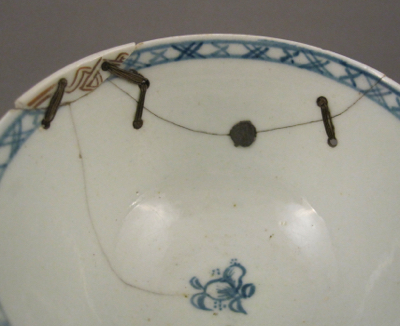
Below is a “perfect” example with matching saucer.
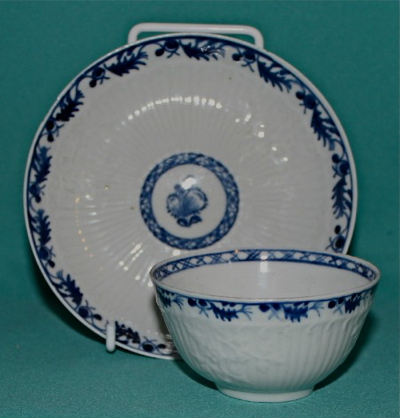
Photo courtesy of Antique Porcelain Online
Tags:blue & white, English, patch, porcelain, soft paste, wire
Posted in bowl/dish | 2 Comments »
Sunday, May 3rd, 2015
This unusual hand blown commemorative glass jug with applied handle was made in England around 1840 and stands 6-1/4″ high. It features beautifully engraved images including a frigate in full sail under the Wearmouth Bridge in Sunderland, an oval cartouche with “WH” monogram, an elaborate fruit basket, a spray of wheat, roses and grapes. Examples of Sunderland souvenirs made of glass are more unusual than the popular pottery pieces with colorful transfer decoration, overglaze washes and pink lustre highlights.
The Wearmouth Bridge was completed in 1796 but was still being commemorated well into the middle of the 19th century. When opened it was the longest single span bridge in the world. The original bridge was replaced in 1929 and is still in use today.
It must have taken a skilled hand to stabilize the large horizontal crack using just 5 metal rivets. The underside reveals a ground pontil mark, as well as scratches and wear, showing that this jug has been well used. But it’s remarkable that a fragile glass jug such as this hasn’t sustained even more wear and damage over the past 175 years.
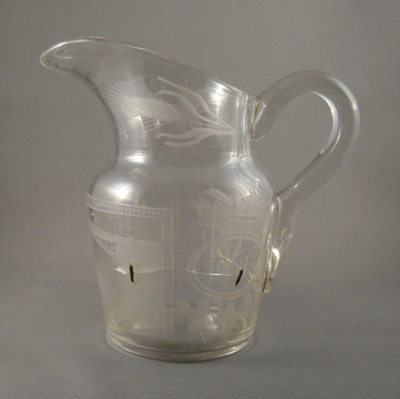
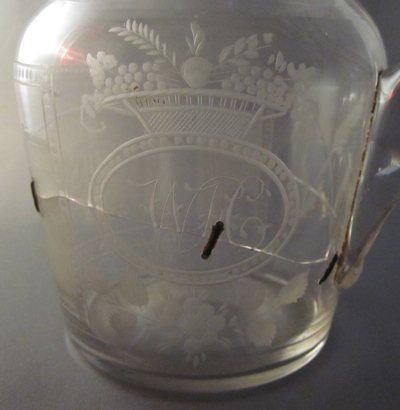
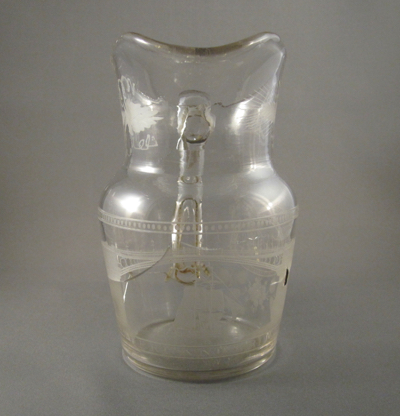

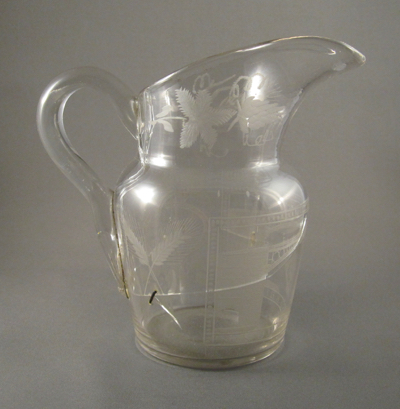


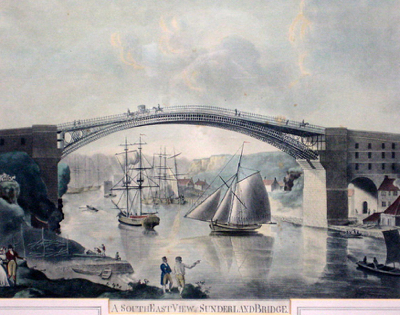
Photo courtesy of The Sunderland Site
Tags:commemorative, English, glass, staples/rivets
Posted in jug | 1 Comment »
Saturday, April 18th, 2015
This heavy salt glazed stoneware ale jug was made in Mortlake, London, in the late 1700s to early 1800s. It has an attenuated baluster shape with applied sprigged decoration including a panel of “The Two Boors”, horses and hounds, classical figures, trees and a windmill on a mound. It stands 8″ high and has a rilled neck and a narrow base, much of which has been chipped away.
It’s apparent that the original handle is long gone but luckily for me, a tinsmith in the 1800s fashioned a wonderful metal replacement handle. It has crimped edges for extra support and a finger rest for comfort when tightly gripped. I imagine the original owner and a chum were inspired by the front panel depicting “The Two Boors”, drank too much ale and dropped the jug. But if it weren’t for our ancestors who drank to excess, my collection of ale jugs with inventive repairs would be minimal to nonexistent.
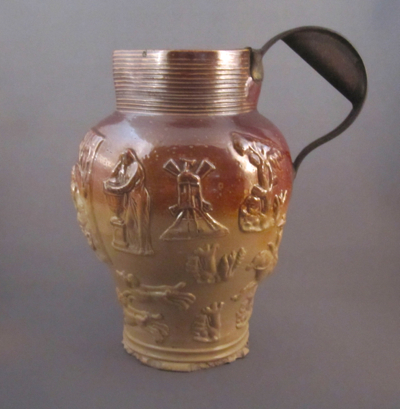
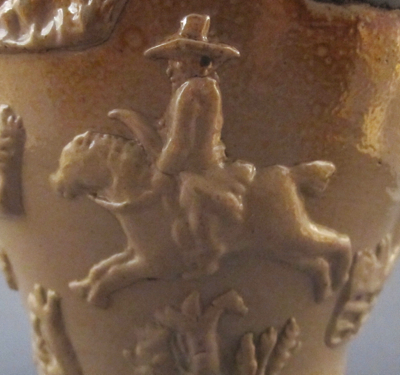
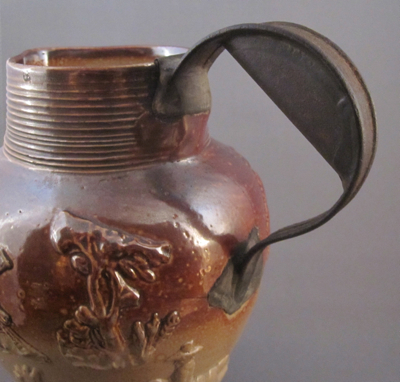
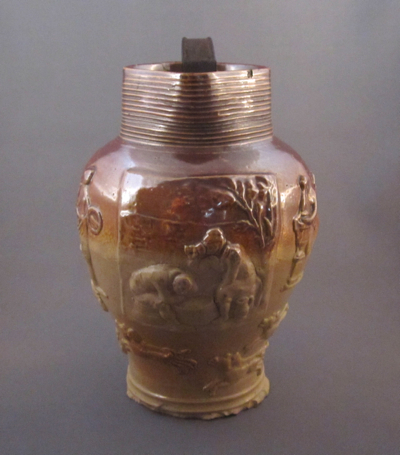
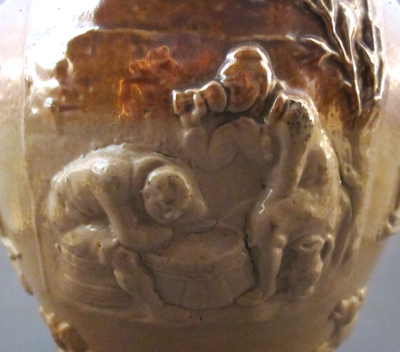



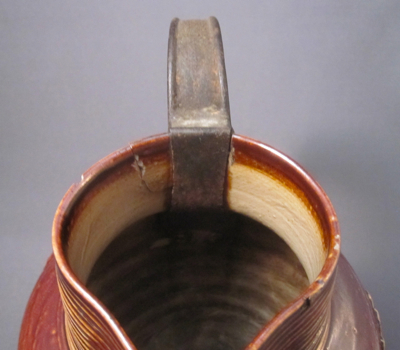
This jug of similar form has its original handle intact.
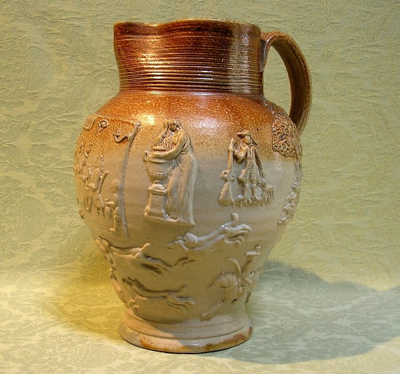
Photo courtesy of Nest Egg Antiques
Tags:English, metal handle, pottery, salt glaze, stoneware
Posted in jug | No Comments »
Saturday, April 11th, 2015
Earlier this week I took a stroll through one of my favorite spots in Manhattan, The Henry R. Luce Center for the Study of American Art at The Metropolitan Museum of Art. If the Smithsonian Museum is known as “The Nation’s Attic”, then I’d like to christen the Luce Center “The City’s Yard Sale” as it is packed from floor to ceiling with glass showcases filled with over 18,000 tchotchkes, including Tiffany lamps, Shaker boxes and Revere silver. This impressive collection of the museum’s overflow allows the public to research and take a peek into the MET’s closets. If you look closely among the rare Chinese porcelain and early English pottery you will find dozens of pieces in various states of disrepair including visible cracks, chips, worn paint and missing parts.
Here are some of my favorite make-do’s, all hoping to one day escape the confines of the study center’s curio cabinets and be placed alongside their more presentable friends in the “big house.”
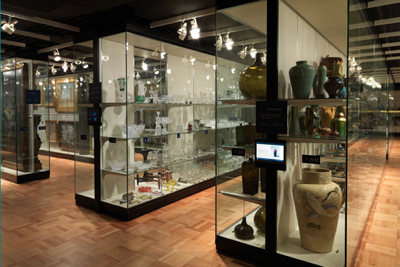



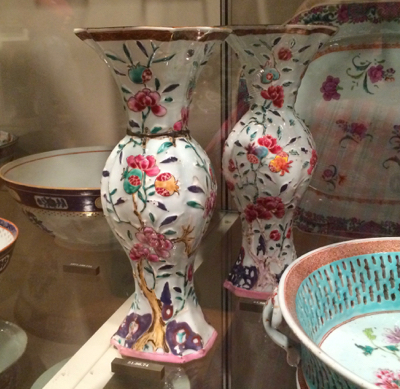
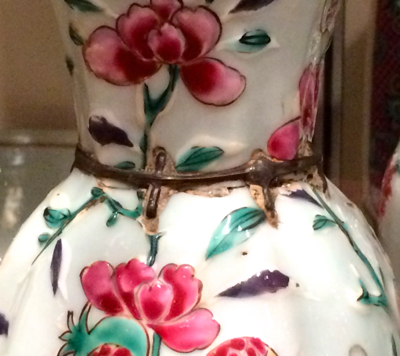


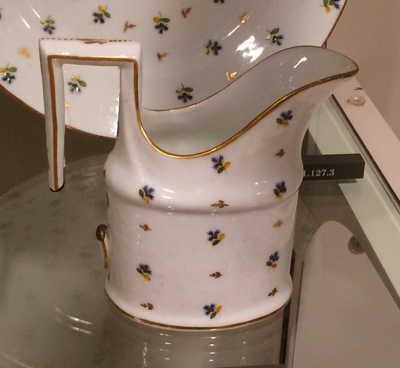


Tags:blue & white, bronze, Chinese, English, glass, metal base, metal handle, porcelain, pottery, staples/rivets
Posted in anecdotal | 2 Comments »
Friday, March 27th, 2015
This mochaware slip banded jug with concentric thin black rings and wide drab and blue bands measures 6″ tall and has a flared base. It was made in England in the mid-1800’s and has a poorly made 20th century replacement handle made of clay compound formed over a metal armature. I applaud those who attempt to repair broken ceramics using the same techniques as 19th century tinkers but I would like to strip away the compound and expose the metal handle on this otherwise striking jug.
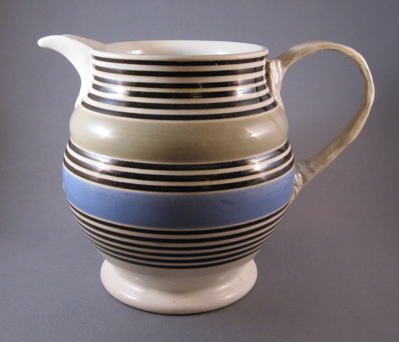
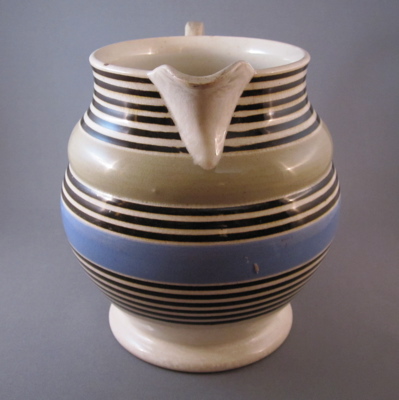
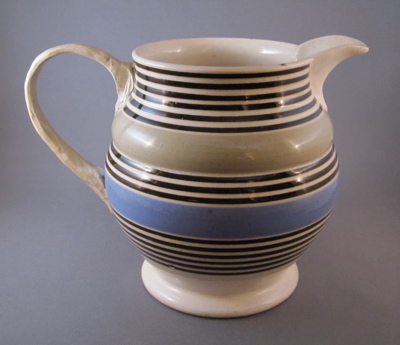
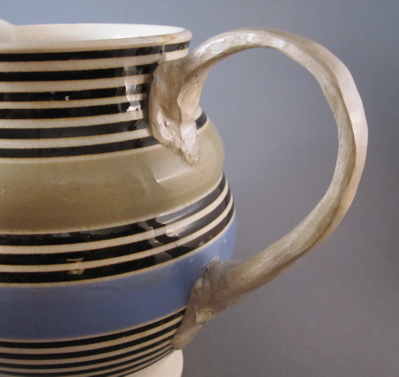

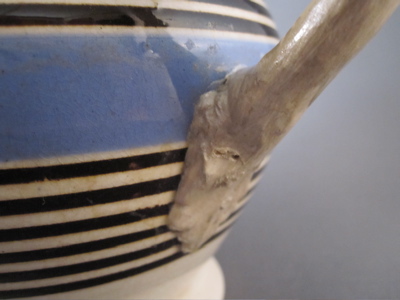
The original loop handle on my jug would have looked like the handle on the jug below with similar form and decoration.
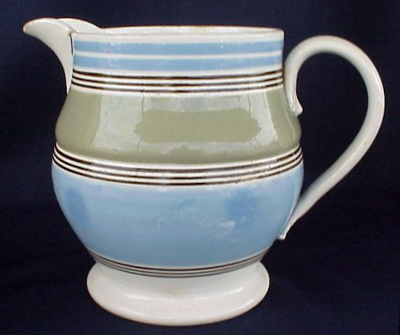
Photo courtesy of Burchard Galleries
Tags:English, metal handle, pottery
Posted in jug | 2 Comments »
Saturday, March 14th, 2015
This English child’s mug, boldly decorated with characters created by illustrator and author Florence Kate Upton (February 22, 1873 – October 16, 1922), is made of porcelain and measures 2-3/4″ high. Her ubiquitous Dutch Dolls and Golly characters are represented here with strong graphics and in full color. The underside has an embossed lithophane image of a girl and boy, visible only when held up to the light. The printed registration mark on the underside dates this mug to 1905.
Second only to the Teddy Bear, the Golly was the most popular toy in Europe in the early 1900s. Although Upton wrote Golly as a lovable, benign character, the image and original name Gollywog eventually became a controversial figure, sparking outrage. Without a patent, other manufacturers copied the likeness and portrayed the character as lazy and evil, becoming a negative symbol and an embarrassment to the black community. The Guardian wrote an article in 2009, “From bedtime story to ugly insult: how Victorian caricature became a racist slur”, explaining the controversy.
Perhaps, during an all-doll tea party, the fragile mug was dropped by its young owner and the handle snapped off. Rather than being tossed out, the broken mug was taken to a china mender who reattached the handle using two metal cuffs and rivets. I am surprised that I don’t come across more examples of early repairs on children’s items, as I imagine many tiny hands had trouble grasping the precious ceramic toys they were given to play with, long before the invention of plastic.

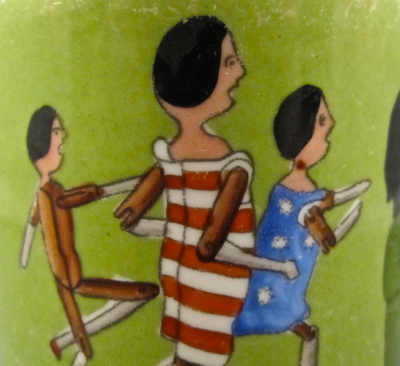
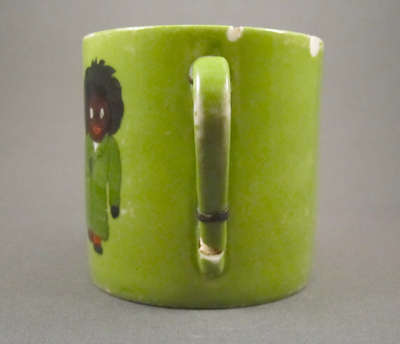
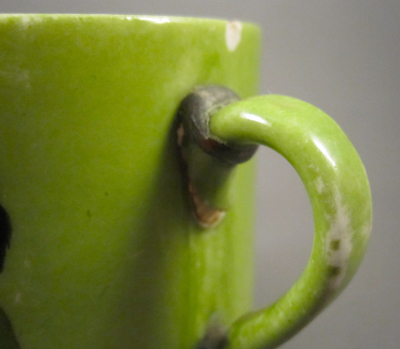
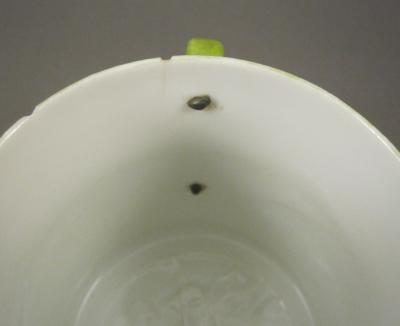
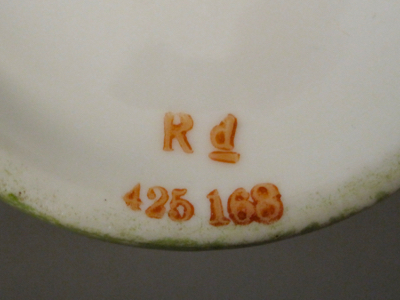
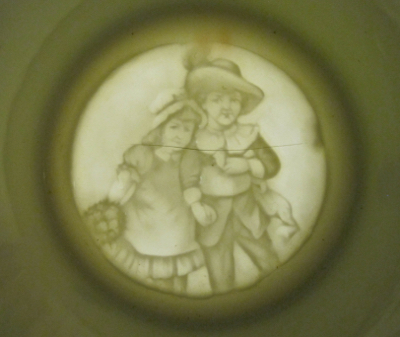
Tags:English, porcelain, staples/rivets
Posted in mug/tankard | 3 Comments »
Sunday, January 18th, 2015
I am a big fan of commemorative pottery, particularly ones with strong graphics and bright colors. Whenever I spot an example from afar in a shop, I secretly hope that it has some sort of inventive repair. Sometimes I get lucky. This creamware mug with printed transfer and hand colored decoration boasts the message “Peace of Europe Signed at Paris May 30, 1814.” Made in 1814 by Bristol Pottery in England to celebrate the signing of the peace treaty marking the end of war with France, this mug measures 4-3/4″ tall and 5-1/4″ wide to end of handle. Check out the details in photos showing the Bristol Pottery mark, the factory in the background, and ships with wood crates no doubt filled with pottery for export.
This mug possesses numerous battle scars, including chips, cracks, and the loss of its original loop handle. After the handle broke off, a 19th century tinker replaced it by drilling through the body and attaching a metal replacement with two square fasteners. To add insult to injury, the replacement handle is covered in rust, a result of further neglect. But if this mug were in “perfect” condition, I would not have purchased it.
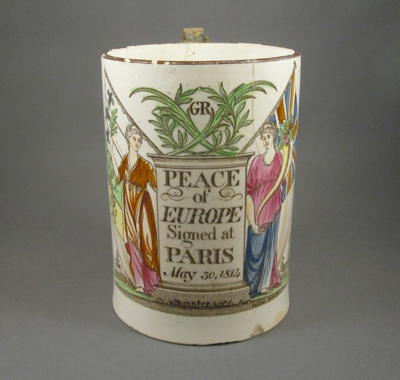
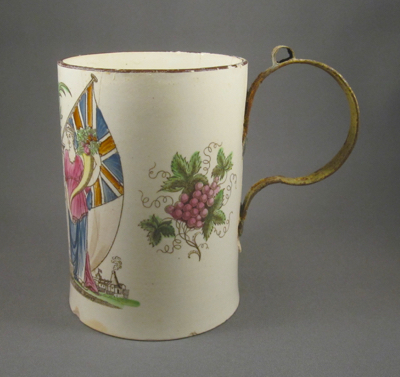
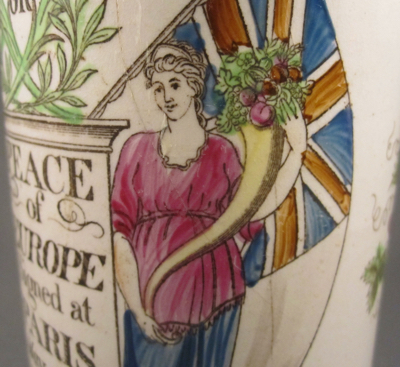
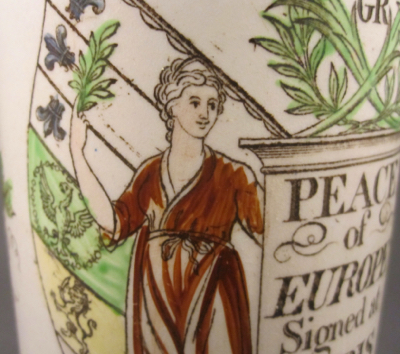
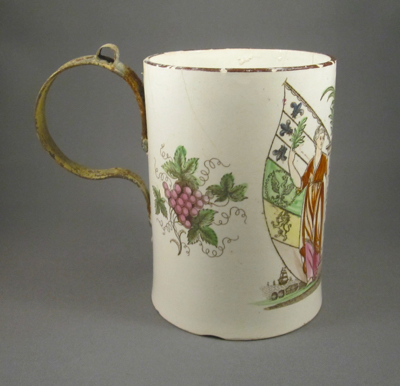


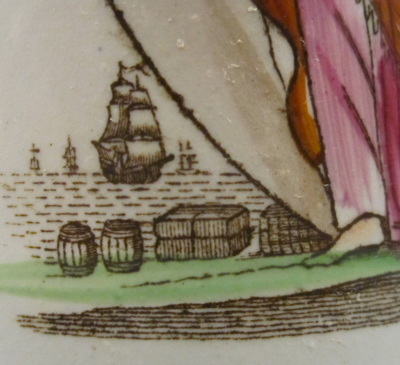
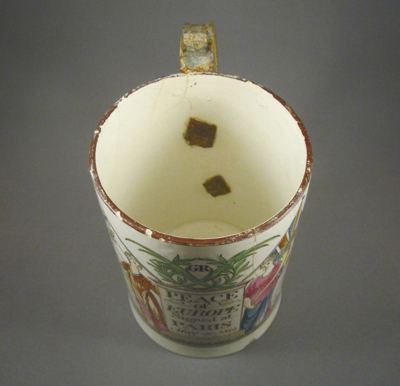
This example, with different copy and overglaze coloring, can be found in the collection of the British Museum in London.

Tags:commemorative, creamware, English, metal handle, pottery
Posted in mug/tankard | 4 Comments »
Sunday, December 21st, 2014
Wishing you all the best during the holiday season and for a healthy and Happy New Year!
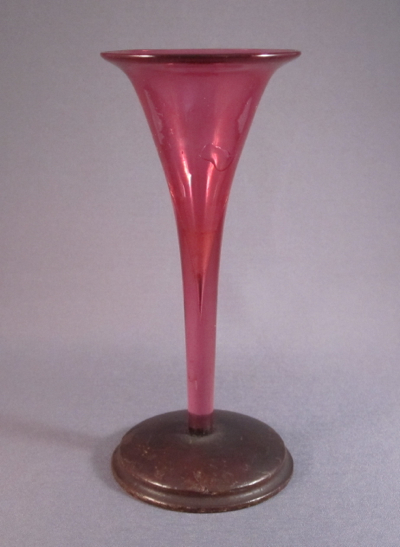
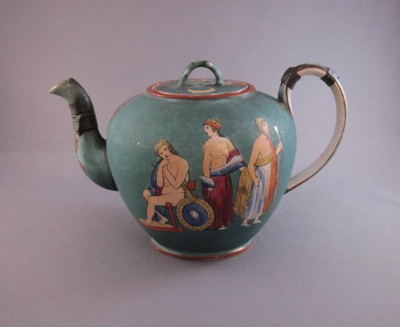
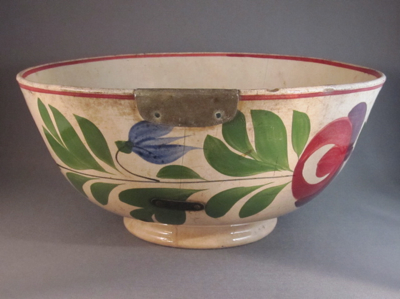
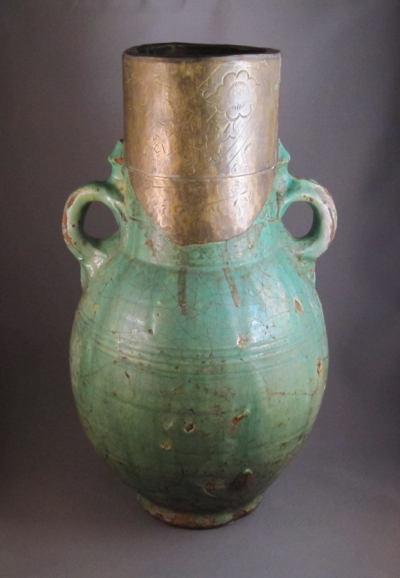
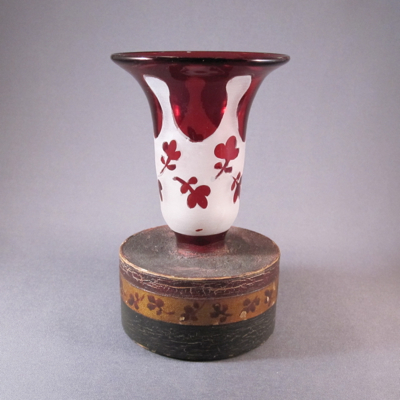
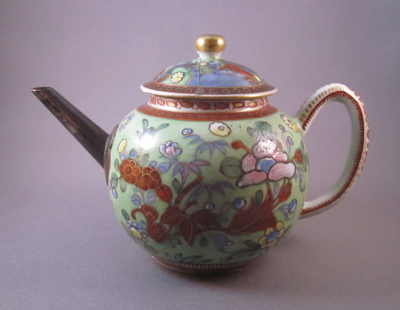
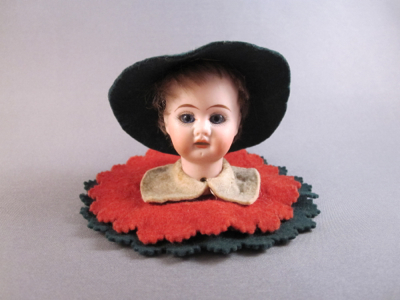
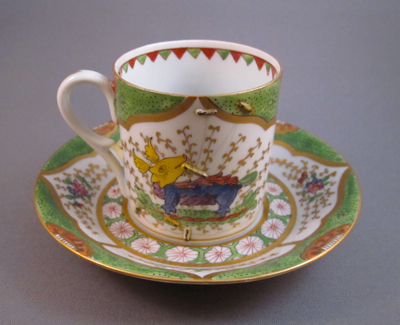
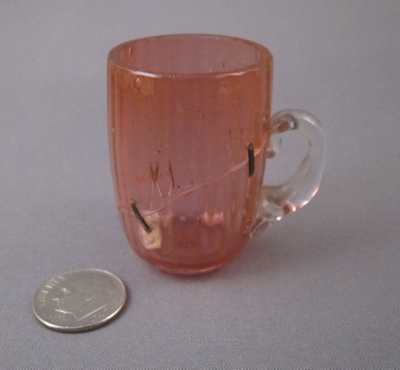
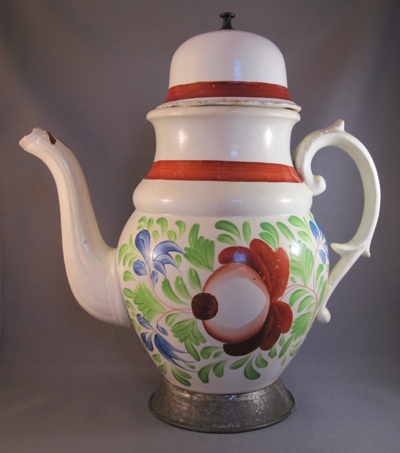
Tags:Chinese, clobbered, English, German, glass, globular, metal base, miniature, porcelain, pottery, silver, staples/rivets, wood base
Posted in bowl/dish, chocolate/coffee pot, cup/saucer, jug, plate/platter, teapot, toy, vase/vessel | 8 Comments »






















































